Tackling the roads in a snow storm is no small task. When a blizzard hits and the whiteout consumes your windshield, danger lurks. Even the most seasoned winter drivers can face extreme conditions that test their abilities. Here are some key tips and items, according to the National Weather Service, that will help keep you, your family, and even your car, safe during this snowy season:
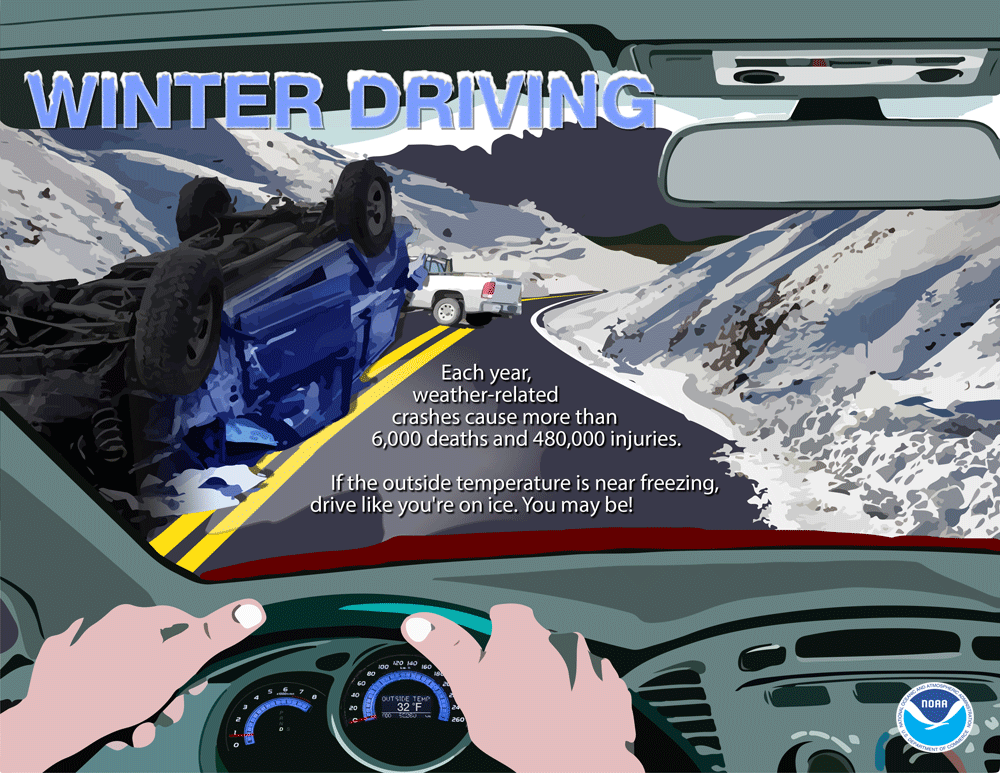
Must-Haves
The only thing worse than driving through a snow storm is getting stuck in one. Should such a perilous situation occur, make sure you have the following items packed and ready in your vehicle:
- Jumper cables — An essential for your vehicle any time of year, but especially important in winter. Flares or reflective triangle are great extras.
- Flashlights — Replace the batteries before the winter season starts and pack some extras; cold temperatures drain battery life faster than normal.
- First Aid Kit — Again, a good item for your car year-round, but even more essential during a snow storm. Also check your purse or bag for essential medications.
- Baby, special needs gear — If you have a baby or family member with special needs, pack diapers and any special formula or food that may be required should you get stuck.
- Food — Stock non-perishable food such as canned food and a can opener, dry cereal and protein rich foods like nuts and energy bars.
- Water — Have at least one gallon of water per person a day for at least three days.
- Basic toolkit — Pliers, wrench, and a screwdriver can fix a troublesome situation.
- Pet supplies — Food and water for your furry friends.
- Radio — Battery or hand cranked, sometimes cell reception is spotty during powerful storms.
- Cat litter or sand — For better tire traction when the roads are particularly slick.
- Shovel — To dig out snow, or to help others who might get stuck but are less prepared than you.
- Ice scraper — Even is you usually park in a garage, have one in the car. Ice can develop on the windshield while you make a quick stop for an errand.
- Clothes — Make sure you dress for the weather in warm clothes, gloves, hat, sturdy boots, jacket and an extra change of clothes for the cold.
- Warmers — Pack extra for body, hand, feet. Should your car battery die, and you have no access to heat, these will come in handy.
- Blankets or sleeping bags — If you get stranded in traffic on a lonely road, you'll be glad to have it.
- Charged Cell Phone — Keep a spare charger in your car as well. as we said earlier, batteries drain quicker in the cold.
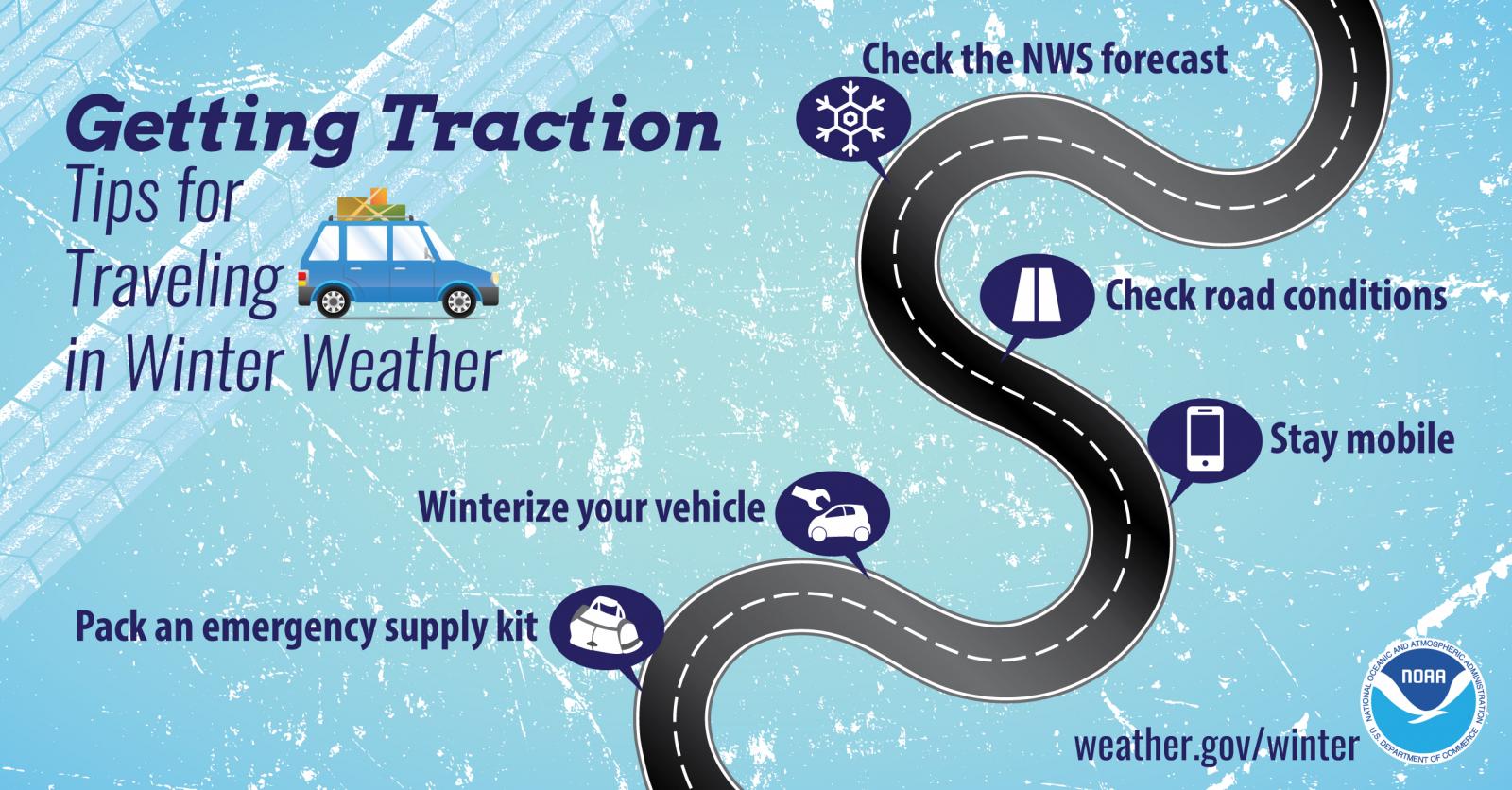
Safety Tips
Know before you go — Understanding what to expect on the roads in a storm can be the difference between a safe commute or getting stranded.
- Get the weather forecast and change your plans if hazardous conditions are expected.
- Check the road. Call 511 or visit the New York State Department of Transportation webpage to check on road conditions. Choose a different route or adjust your travel plans if road conditions are dangerous.
- Ready your vehicle. Check your battery, wipers, coolant and other systems affected by cold temperatures. Make sure your tires have good tread and clear snow, ice or dirt away from your windows, lights or rear-view camera.
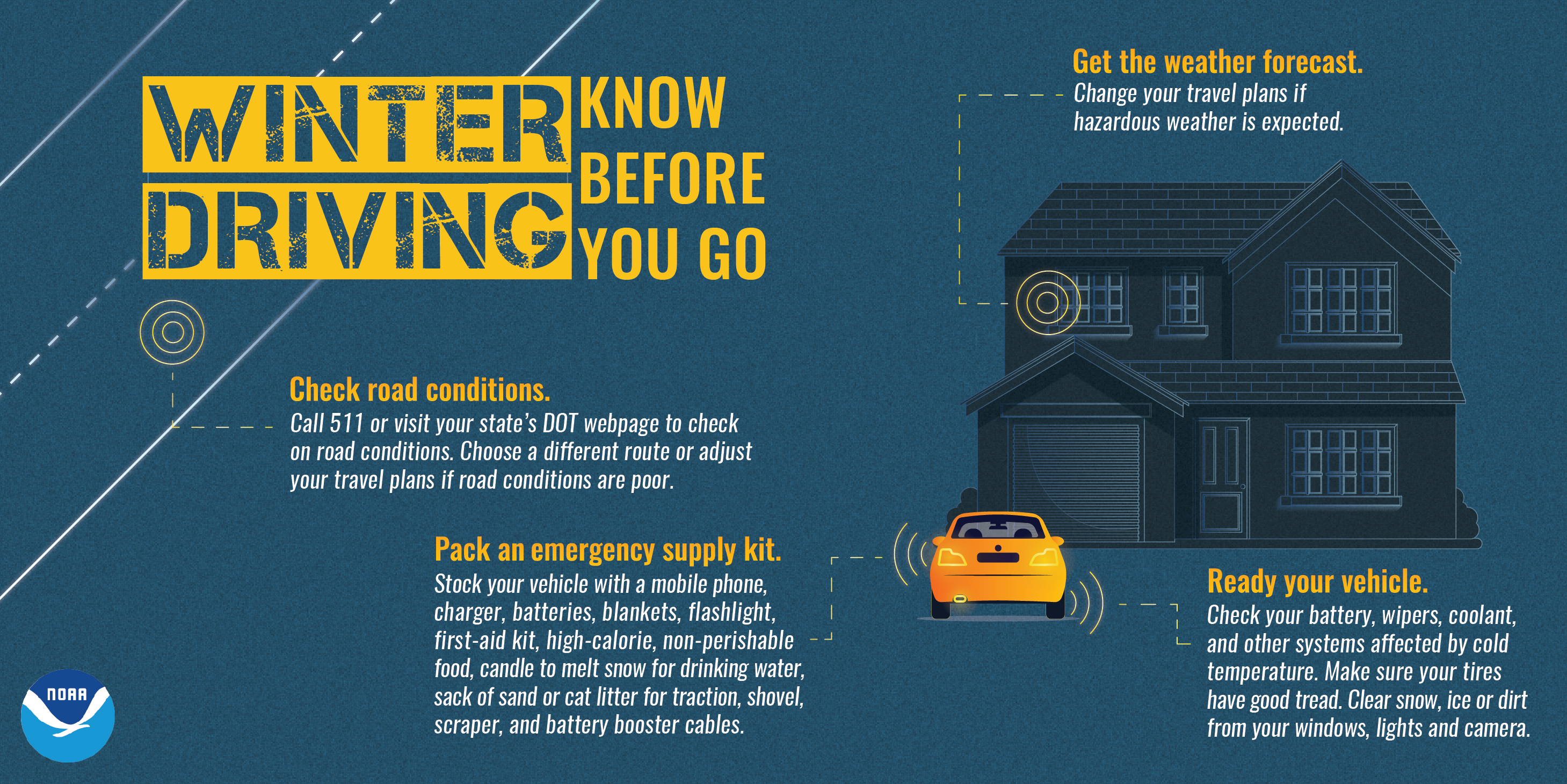
Focus on safety — It's not just you on the roads. It could be your passenger, your neighbor or a complete stranger, but everyone is just trying to travel safely.
- Prevent a bad situation from getting worse. If you're involved in an accident, try to pull your vehicle off the road and use hazard lights, flares, reflectors or flashlights to warn other drivers. Whatever you do, stay off the road, dial 911 and wait for police to arrive. These actions can help prevent multi-vehicle crashes in winter weather.
- Always avoid risky behavior such as texting or taking phone calls, speeding, or drug/alcohol use. These activities are always dangerous, but the risk is much higher in winter weather.
- Wear your seatbelt. Accidents happen more frequently with wet and icy roads. Always wear your seatbelt and ensure everyone in your vehicle does the same, including young children in proper car seats.
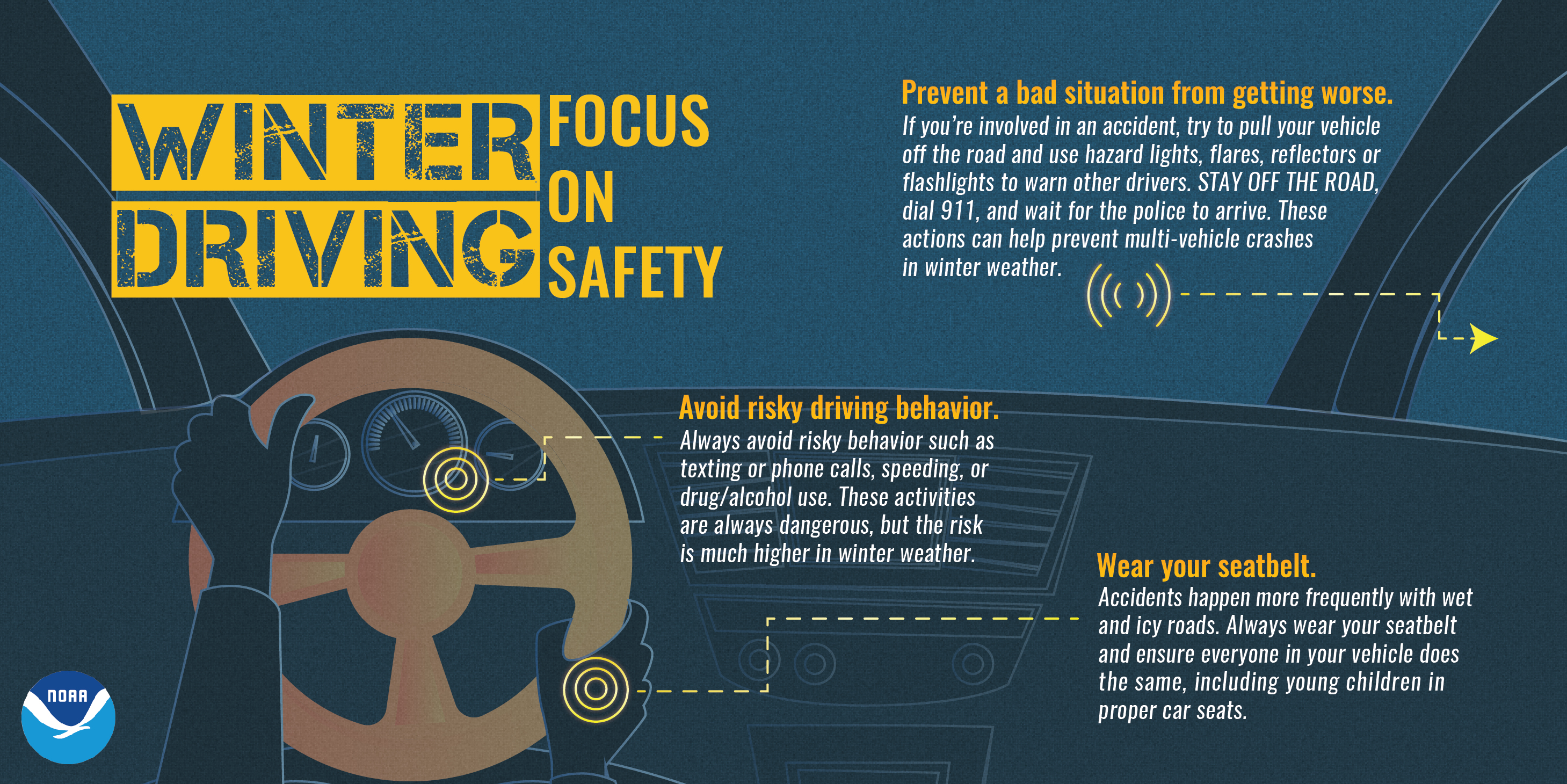
While on the road — Being prepared is half the battle. The other half is staying vigilant during a storm.
- Don't crowd the plow. The road behind an active plow is safer to drive on. Give them plenty of room to work and only pass when it is safe to do so.
- Change the way you drive. Drive slower than normal and leave more room between you and surrounding vehicles when roads are wet, snowy or icy. Do not use cruise control, brake quickly or take sharp turns.
- Stay alert. Make sure you keep your gas tank over half full and keep a close eye on road conditions, which can change rapidly in winter. On road trips, take breaks often so you can maintain your focus while you're on the road.
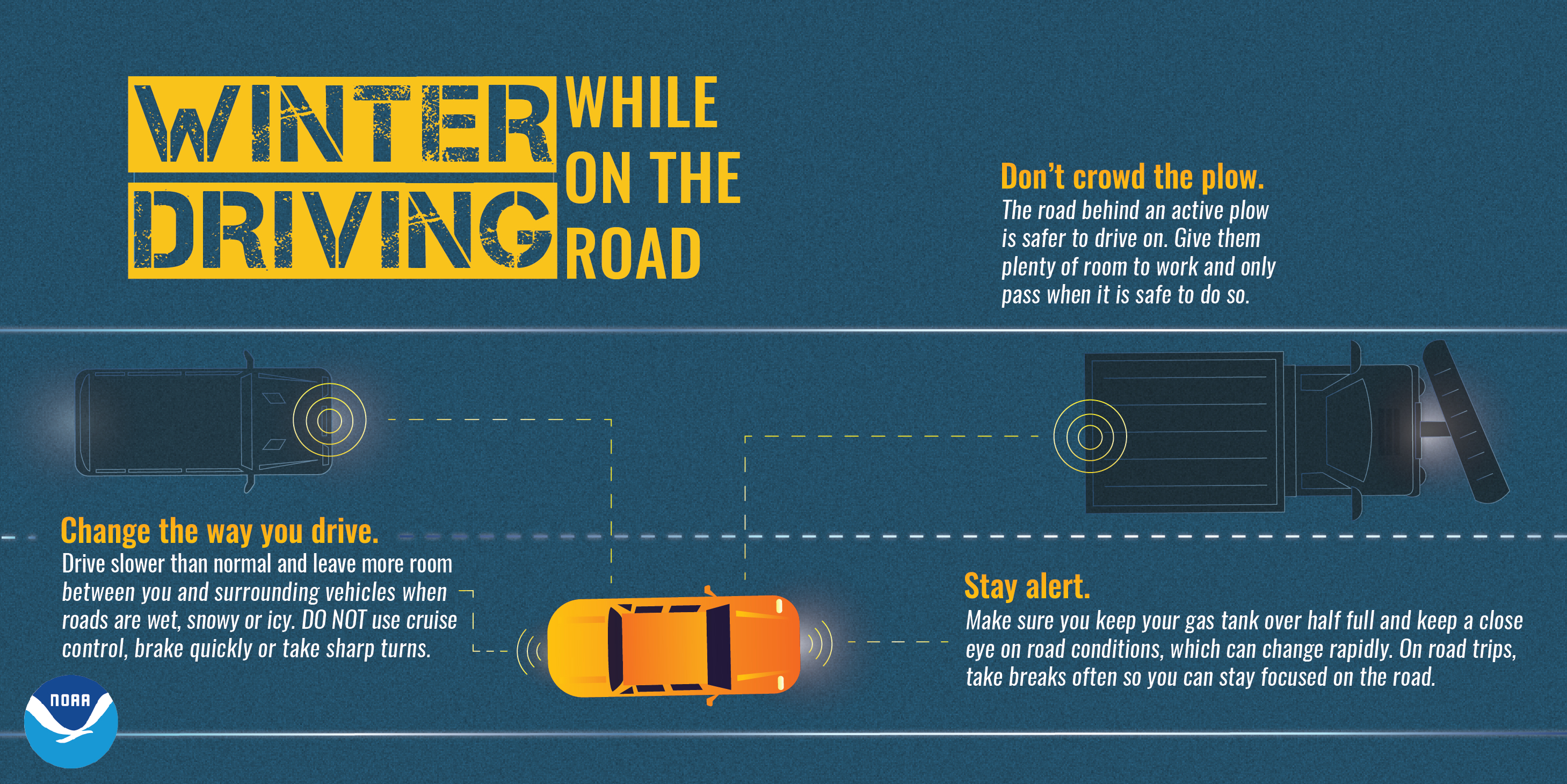
Road Resources
- New York State Department of Transportation
- New York State Thruway Authority
- New York State Travel 511 Information Gateway
Follow these tips to ensure a safe snowy commute for you and everyone else on the road.



